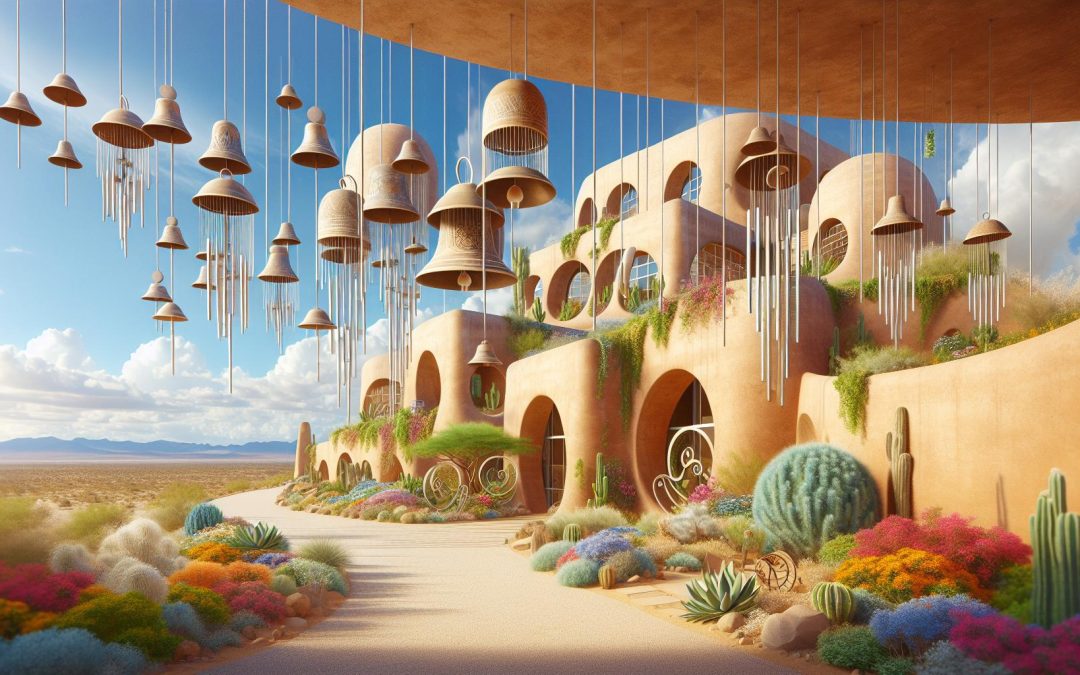Scottsdale, Arizona, isn’t just about the sun-soaked deserts and vibrant nightlife; it’s a hidden gem brimming with architectural marvels that often fly under the radar. From modern masterpieces to historical treasures, this city has a way of blending the old with the new in the most seamless manner.
I’ve always been fascinated by how buildings tell stories, and Scottsdale’s structures are no exception. They’re not just buildings; they’re narratives of innovation, tradition, and the relentless pursuit of beauty. Walking through the city feels like flipping through the pages of an architectural digest, with each structure more captivating than the last.
So, let’s dive into the heart of Scottsdale and uncover the architectural wonders that make this city truly unique. Whether you’re an architecture aficionado or simply curious, I promise there’s plenty to marvel at.
Exploring Taliesin West
Delving deeper into Scottsdale’s architectural treasures, I had the privilege of exploring Taliesin West, a masterpiece that truly encapsulates the innovative spirit of Frank Lloyd Wright. Nestled in the foothills of the McDowell Mountains, this landmark is not just a building; it’s an embodiment of Wright’s philosophy that architecture should be in harmony with humanity and its environment.
As I strolled through the sprawling complex, it was evident that Wright’s vision for Taliesin West was much more than a winter retreat. It served as his personal studio, architectural laboratory, and school for his apprentices. The way the natural light dances through the geometric shapes and angles of the structure is mesmerizing. Wright’s use of local materials, such as desert rocks, melds the buildings into the landscape, making it seem as if they’re an inherent part of the desert.
One aspect that stood out to me was the innovative use of environmental design. Wright designed the complex to be naturally cooled and heated, showcasing his ahead-of-his-time concern for sustainable living. This approach to design not only conserves energy but also ensures that the structure coexists harmoniously with the surrounding desert.
During my visit, I learned about the ongoing preservation efforts that keep Taliesin West vibrant and accessible to the public. It reminds us that preserving such sites is crucial for future generations to enjoy and draw inspiration from.
The guided tours offered a glimpse into Wright’s life and his philosophical approach to architecture. Hearing stories about the challenges and triumphs of building Taliesin West enriched my understanding of this architectural wonder. Each corner of the complex tells a story, from the drafting room where countless iconic designs were conceived to the intimate living quarters that reflect Wright’s daily life.
Visiting Taliesin West wasn’t just a tour; it was an immersive experience into the mind of one of the most influential architects in American history.
Frank Lloyd Wright’s Influence in Scottsdale

When I first ventured into exploring Scottsdale’s architectural landscape, I knew I was about to embark on a journey filled with awe-inspiring designs and groundbreaking concepts. Among the myriad of architects who’ve left their mark on this desert city, one name stood out with a legacy so profound that his influence can be felt to this day: Frank Lloyd Wright. This legendary architect wasn’t just about creating buildings; he was about crafting experiences that blend seamlessly with the environment, a philosophy that’s vividly present in Scottsdale’s architectural identity.
Wright’s masterpiece, Taliesin West, serves not just as a testament to his genius but also as a beacon of inspiration for architects worldwide. As I walked through its spaces, I couldn’t help but notice how Wright’s use of natural materials and his innovative designs harmonize with the Arizona landscape, embodying his belief in “organic architecture.” It’s fascinating to observe how his principles of leveraging the natural environment to enhance architectural designs have influenced Scottsdale’s architectural ethos, paving the way for structures that are both innovative and in tune with their surroundings.
But Wright’s influence goes beyond Taliesin West. His philosophies have permeated Scottsdale in more ways than one, inspiring a generation of architects to think differently about their creations. Homes and buildings across the city echo Wright’s ideals, with features that emphasize the integration of indoor and outdoor spaces, use of local materials, and a keen attention to detail that ensures each structure tells its own unique story.
As I delved deeper into understanding Wright’s impact on Scottsdale, I realized that his legacy is not just about the buildings he left behind but also about inspiring a mindset shift towards sustainable and harmonious architectural practices. It’s a testament to Wright’s vision that Scottsdale today stands as a showcase of architectural innovation that seamlessly blends with the natural beauty of Arizona’s landscapes.
The Rustic Charm of Old Town Scottsdale
Walking through Old Town Scottsdale, I’m immediately transported to a time when the Wild West was more than just a chapter in history books. This part of town isn’t just a tourist destination; it’s a vibrant tribute to Scottsdale’s rich heritage, where every cobblestone and corner tells a story.
Old Town’s architecture is a fascinating blend of Old West motifs and Southwestern style, creating a unique streetscape that’s both nostalgic and inviting. The wooden facades, rustic signage, and hitching posts echo the days of cowboys and saloons, while the adobe buildings and native cactus gardens ground the area firmly in the Southwestern landscape.
One can’t help but admire how seamlessly modern elements are woven into the historical fabric of Old Town. Cozy cafés and upscale restaurants nestle within century-old structures, offering a culinary journey that’s as surprising as it is delicious. Art galleries and chic boutiques stand side by side with traditional Mexican shops, selling handcrafted treasures that I can’t resist browsing through.
At the heart of Old Town’s charm is its ability to celebrate the past while embracing the present. Events like the weekly ArtWalk bring the community together, showcasing local artists and musicians against the backdrop of Scottsdale’s storied buildings. It’s a reminder that architecture isn’t just about structures; it’s about creating spaces where memories are made and shared.
Exploring Old Town, I’m struck by the careful balance Scottsdale has achieved between preservation and progress. Here, the whisper of history and the buzz of modern life harmonize in a way that’s both enchanting and inspiring. Through its buildings and spaces, Old Town Scottsdale manages to capture the essence of a bygone era while keeping an eye firmly on the future, inviting locals and visitors alike to become part of its ongoing story.
Stories of Innovation: Scottsdale Museum of Contemporary Art
When I stepped into the Scottsdale Museum of Contemporary Art (SMoCA), I couldn’t help but be amazed by its innovative architecture. Nestled in the heart of downtown Scottsdale, this jewel of contemporary design shatters the conventional expectations of museum architecture. SMoCA, known for its minimalist yet astonishingly impactful structure, stands as a testament to the city’s commitment to modernity and culture.
The museum’s exterior, with its clean lines and use of reflective materials, invites light to play on its surfaces, creating a visual dialogue with the Arizona sky. It’s not just a building; it’s a canvas that interacts with the environment around it. Inside, the galleries unfold in a series of well-considered spaces, allowing art to be experienced rather than just viewed. The use of natural light is so masterful that each visit offers a unique perspective, shaped by the time of day and season.
| Feature | Description |
|---|---|
| Architectural Style | Minimalist Contemporary |
| Year Opened | 1999 |
| Notable Exhibitions | “Knight Rise” by James Turrell, permanent exhibit |
| Public Artwork | “LOVE” by Robert Indiana, located outdoors |
What truly sets SMoCA apart, though, is its dedication to sustainability. The museum integrates eco-friendly practices, from energy-efficient lighting to water-saving landscaping, underlining Scottsdale’s broader initiative towards environmental consciousness.
By offering a rotating array of exhibits alongside its striking architecture, SMoCA provides an ever-evolving dialogue with its visitors. It’s a place where the fusion of art and architectural innovation invites us to see the world anew. Whether you’re a devout art enthusiast or someone simply curious about contemporary design, the museum offers a glimpse into the vibrant heart of Scottsdale’s cultural scene.
Blending Nature and Architecture at Cosanti

While exploring Scottsdale’s architectural jewels, my journey brought me to a place where nature and architecture intermingle seamlessly: Cosanti. This enchanting site is not just an architectural marvel; it’s a testament to the vision of Paolo Soleri, who championed the concept of “arcology” – the fusion of architecture with ecology. My curiosity piqued, I knew I had to dive deeper into this unique harmony of design and nature.
As I wandered through Cosanti, I couldn’t help but be amazed by the earth-cast structures that seemed to emerge from the ground itself. These buildings, designed with a keen eye for environmental sensitivity, were not just created to be inhabited. They were sculpted to coexist with the desert landscape, minimizing their impact while maximizing functionality and beauty. It was evident that every dome, arch, and artistic detail was crafted with the intention of blending the man-made with the natural.
The outdoor spaces at Cosanti are equally captivating, with lush gardens and water features that invite local wildlife to make themselves at home. The sounds of nature intermingle with the melodic chimes, for which Cosanti is also famous. These wind-bell chimes, crafted on-site, add an auditory layer to the sensory experience of the place, creating a symphony that connects visitors not just to the artistry of Soleri but to the natural world surrounding them.
Soleri’s visionary approach at Cosanti serves as a powerful reminder of the potential for human creativity to complement and enhance the environment rather than compete with it. Through his work, I was reminded of the delicate balance we share with nature and the responsibility we have to foster symbiotic relationships within our spaces.
Indeed, Cosanti offers more than just a visual feast; it’s a living example of sustainable design that remains in harmony with its desert backdrop. Observing how the buildings interact with the changing light of day, I felt a profound connection between Soleri’s creations and the vast Arizona sky above. This bond between earth and structure at Cosanti illustrates the endless possibilities when we choose to work alongside nature rather than in opposition to it.
Conclusion
Exploring Scottsdale’s architectural marvels, especially Cosanti, has been an eye-opening journey for me. It’s clear that the fusion of architecture and nature doesn’t just exist in theory but flourishes in the heart of Arizona. Walking through Cosanti, I’ve felt a deeper appreciation for how architecture can transcend mere structures to become a living, breathing entity that respects and enhances its natural surroundings. Paolo Soleri’s vision of arcology isn’t just a concept but a tangible reality that invites us to rethink our relationship with the environment. It’s been a reminder that creativity and sustainability can go hand in hand, crafting spaces that not only inspire but also connect us more intimately with the world around us.







